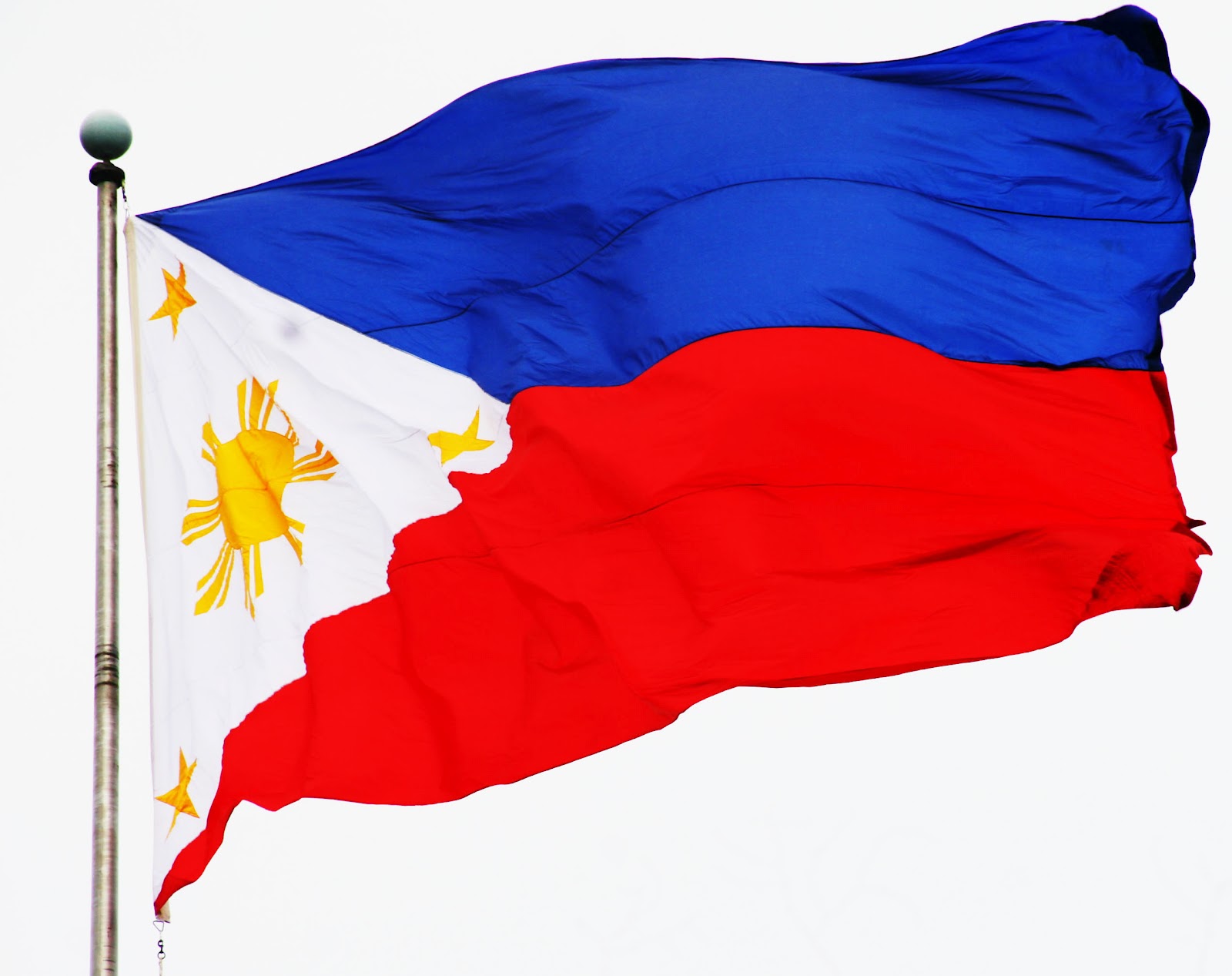The first Filipino flag can be traced from the time of the Andres Bonifacio's secret society named: Kataastaasang Kagalanggalang Katipunan ng mga Anak ng Bayan (Highest and Most Honorable Society of the Sons of the Nation) or the Katipunan or KKK for short. Benita Rodriquez and Bonifacio's wife, Gregoria de Jesus.
It was in this skirmish that the Philippine flag was first unfurled as the revolutionary standard. Sewn in Hong Kong by Filipino expatriates and brought to the country by Aguinaldo, the flag was a tri-color featuring red and blue with a white triangle framing three yellow stars and an anthropomorphic eight-rayed sun.
The eight rays of the sun represent the provinces of Manila, Bulacan, Pampanga, Nueva Ecija, Morong, Laguna, Batangas and Cavite, which were declared under Martial Law by a Decree of the Spanish government during the revolution of 1896.
The flag shall be displayed in a private buildings and residences or raised in the ofen flag-staffs in front of said buildings every:
APRIL 9,(ARAW NG KAGITINGAN)
MAY 1, (LABOR DAY)
MAY 28, (NATIONAL FLAG DAY) TO JUNE 12 (INDEPENDENCE DAY)
LAST SUNDAY OF AUGUST(NATIONAL HEROES DAY)
NOVEMBER 30 (BONIFACIO DAY)
DECEMBER 30 (RIZAL DAY)
All government agencies and instrumentalities, and local government offices, government-owned corporations and local government units are enjoined to observe flag day with appropriate ceremonies. Socio-civic groups, non-government organizations and the private sector are exhorted to cooperate in making the celebrations a success.
(this photo is borrowed from google)
